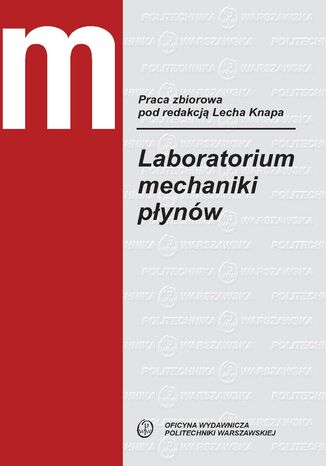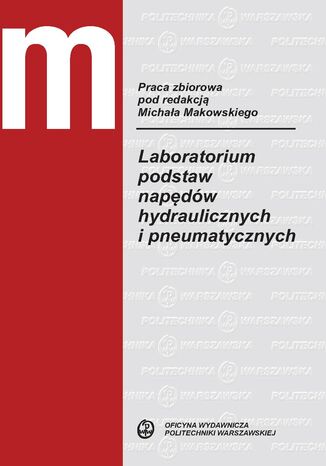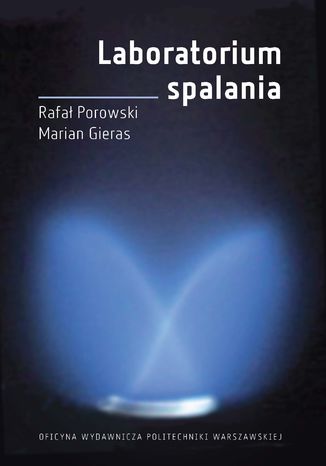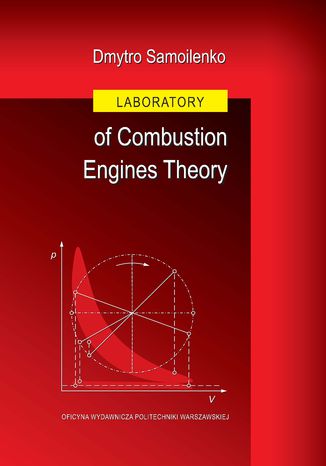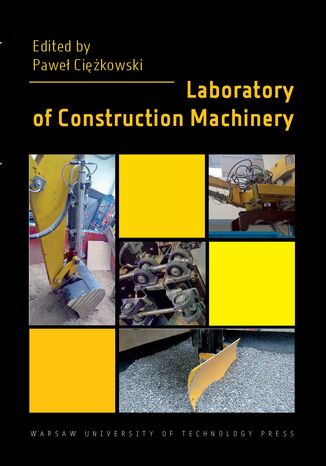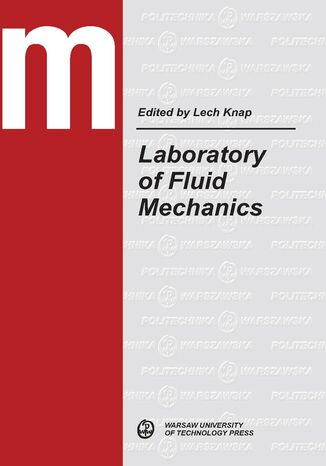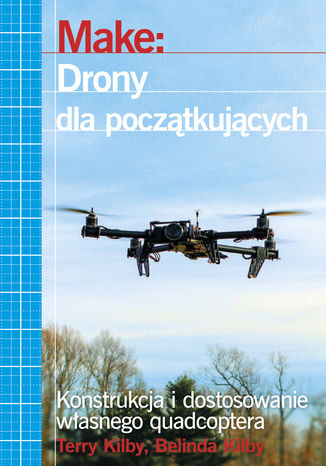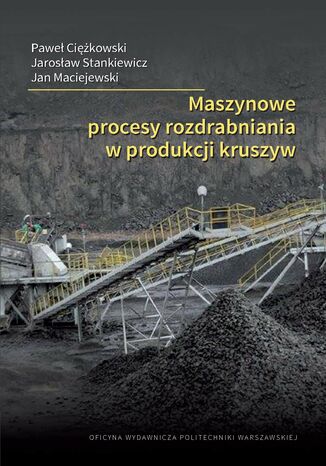Kategorien
E-Books
-
Wirtschaft
- Bitcoin
- Geschäftsfrau
- Coaching
- Controlling
- E-Business
- Ökonomie
- Finanzen
- Börse und Investitionen
- Persönliche Kompetenzen
- Computer im Büro
- Kommunikation und Verhandlungen
- Kleines Unternehmen
- Marketing
- Motivation
- Multimedia-Training
- Immobilien
- Überzeugung und NLP
- Steuern
- Sozialpolitik
- Handbȕcher
- Präsentationen
- Führung
- Public Relation
- Berichte, Analysen
- Geheimnis
- Social Media
- Verkauf
- Start-up
- Ihre Karriere
- Management
- Projektmanagement
- Personal (HR)
-
Für Kinder
-
Für Jugendliche
-
Bildung
-
Enzyklopädien, Wörterbücher
-
E-Presse
- Architektura i wnętrza
- Biznes i Ekonomia
- Haus und Garten
- E-Business
- Finanzen
- Persönliche Finanzen
- Unternehmen
- Fotografie
- Informatik
- HR und Gehaltsabrechnung
- Computer, Excel
- Buchhaltung
- Kultur und Literatur
- Wissenschaftlich und akademisch
- Umweltschutz
- meinungsbildend
- Bildung
- Steuern
- Reisen
- Psychologie
- Religion
- Landwirtschaft
- Buch- und Pressemarkt
- Transport und Spedition
- Gesundheit und Schönheit
-
Geschichte
-
Informatik
- Office-Programme
- Datenbank
- Bioinformatik
- IT Branche
- CAD/CAM
- Digital Lifestyle
- DTP
- Elektronik
- Digitale Fotografie
- Computergrafik
- Spiele
- Hacking
- Hardware
- IT w ekonomii
- Wissenschaftliche Pakete
- Schulbücher
- Computergrundlagen
- Programmierung
- Mobile-Programmierung
- Internet-Server
- Computernetzwerke
- Start-up
- Betriebssysteme
- Künstliche Inteligenz
- Technik für Kinder
- Webmaster
-
Andere
-
Fremdsprachen lernen
-
Kultur und Kunst
-
Lektüre
-
Literatur
- Anthologien
- Ballade
- Biografien und Autobiografien
- Für Erwachsene
- Drama
- Tagebücher, Memoiren, Briefe
- Epos
- Essay
- Science Fiction
- Felietonys
- Fiktion
- Humor, Satire
- Andere
- Klassisch
- Krimi
- Sachbücher
- Belletristik
- Mity i legendy
- Nobelpreisträger
- Kurzgeschichten
- Gesellschaftlich
- Okultyzm i magia
- Erzählung
- Erinnerungen
- Reisen
- Gedicht
- Poesie
- Politik
- Populärwissenschaftlich
- Roman
- Historischer Roman
- Prosa
- Abenteuer
- Journalismus
- Reportage
- Romans i literatura obyczajowa
- Sensation
- Thriller, Horror
- Interviews und Erinnerungen
-
Naturwissenschaften
-
Sozialwissenschaften
-
Schulbücher
-
Populärwissenschaft und akademisch
- Archäologie
- Bibliotekoznawstwo
- Filmwissenschaft
- Philologie
- Polnische Philologie
- Philosophie
- Finanse i bankowość
- Erdkunde
- Wirtschaft
- Handel. Weltwirtschaft
- Geschichte und Archäologie
- Kunst- und Architekturgeschichte
- Kulturwissenschaft
- Linguistik
- Literaturwissenschaft
- Logistik
- Mathematik
- Medizin
- Geisteswissenschaften
- Pädagogik
- Lehrmittel
- Populärwissenschaftlich
- Andere
- Psychologie
- Soziologie
- Theatrologie
- Teologie
- Theorien und Wirtschaftswissenschaften
- Transport i spedycja
- Sportunterricht
- Zarządzanie i marketing
-
Handbȕcher
-
Spielanleitungen
-
Professioneller und fachkundige Leitfaden
-
Jura
- Sicherheit und Gesundheit am Arbeitsplatz
- Geschichte
- Verkehrsregeln. Führerschein
- Rechtswissenschaften
- Gesundheitswesen
- Allgemeines. Wissenskompendium
- akademische Bücher
- Andere
- Bau- und Wohnungsrecht
- Zivilrecht
- Finanzrecht
- Wirtschaftsrecht
- Wirtschafts- und Handelsrecht
- Strafrecht
- Strafrecht. Kriminelle Taten. Kriminologie
- Internationales Recht
- Internationales und ausländisches Recht
- Gesundheitsschutzgesetz
- Bildungsrecht
- Steuerrecht
- Arbeits- und Sozialversicherungsrecht
- Öffentliches, Verfassungs- und Verwaltungsrecht
- Familien- und Vormundschaftsrecht
- Agrarrecht
- Sozialrecht, Arbeitsrecht
- EU-Recht
- Industrie
- Agrar- und Umweltschutz
- Wörterbücher und Enzyklopädien
- Öffentliche Auftragsvergabe
- Management
-
Führer und Reisen
- Afrika
- Alben
- Südamerika
- Mittel- und Nordamerika
- Australien, Neuseeland, Ozeanien
- Österreich
- Asien
- Balkan
- Naher Osten
- Bulgarien
- China
- Kroatien
- Tschechische Republik
- Dänemark
- Ägypten
- Europa
- Frankreich
- Berge
- Griechenland
- Spanien
- Niederlande
- Island
- Litauen
- Mapy, Plany miast, Atlasy
- Miniführer
- Deutschland
- Norwegen
- Aktive Reisen
- Polen
- Portugal
- Andere
- Russland
- Rumänien
- Slowakei
- Slowenien
- Schweiz
- Schweden
- Welt
- Türkei
- Ukraine
- Ungarn
- Großbritannien
- Italien
-
Psychologie
- Lebensphilosophien
- Kompetencje psychospołeczne
- zwischenmenschliche Kommunikation
- Mindfulness
- Allgemeines
- Überzeugung und NLP
- Akademische Psychologie
- Psychologie von Seele und Geist
- Arbeitspsychologie
- Relacje i związki
- Elternschafts- und Kinderpsychologie
- Problemlösung
- Intellektuelle Entwicklung
- Geheimnis
- Sexualität
- Verführung
- Aussehen ind Image
- Lebensphilosophien
-
Religion
-
Sport, Fitness, Diäten
-
Technik und Mechanik
Hörbücher
-
Wirtschaft
- Bitcoin
- Geschäftsfrau
- Coaching
- Controlling
- E-Business
- Ökonomie
- Finanzen
- Börse und Investitionen
- Persönliche Kompetenzen
- Kommunikation und Verhandlungen
- Kleines Unternehmen
- Marketing
- Motivation
- Immobilien
- Überzeugung und NLP
- Steuern
- Handbȕcher
- Präsentationen
- Führung
- Public Relation
- Geheimnis
- Social Media
- Verkauf
- Start-up
- Ihre Karriere
- Management
- Projektmanagement
- Personal (HR)
-
Für Kinder
-
Für Jugendliche
-
Bildung
-
Enzyklopädien, Wörterbücher
-
Geschichte
-
Informatik
-
Andere
-
Fremdsprachen lernen
-
Kultur und Kunst
-
Lektüre
-
Literatur
- Anthologien
- Ballade
- Biografien und Autobiografien
- Für Erwachsene
- Drama
- Tagebücher, Memoiren, Briefe
- Epos
- Essay
- Science Fiction
- Felietonys
- Fiktion
- Humor, Satire
- Andere
- Klassisch
- Krimi
- Sachbücher
- Belletristik
- Mity i legendy
- Nobelpreisträger
- Kurzgeschichten
- Gesellschaftlich
- Okultyzm i magia
- Erzählung
- Erinnerungen
- Reisen
- Poesie
- Politik
- Populärwissenschaftlich
- Roman
- Historischer Roman
- Prosa
- Abenteuer
- Journalismus
- Reportage
- Romans i literatura obyczajowa
- Sensation
- Thriller, Horror
- Interviews und Erinnerungen
-
Naturwissenschaften
-
Sozialwissenschaften
-
Populärwissenschaft und akademisch
-
Handbȕcher
-
Professioneller und fachkundige Leitfaden
-
Jura
-
Führer und Reisen
-
Psychologie
- Lebensphilosophien
- zwischenmenschliche Kommunikation
- Mindfulness
- Allgemeines
- Überzeugung und NLP
- Akademische Psychologie
- Psychologie von Seele und Geist
- Arbeitspsychologie
- Relacje i związki
- Elternschafts- und Kinderpsychologie
- Problemlösung
- Intellektuelle Entwicklung
- Geheimnis
- Sexualität
- Verführung
- Aussehen ind Image
- Lebensphilosophien
-
Religion
-
Sport, Fitness, Diäten
-
Technik und Mechanik
Videokurse
-
Datenbank
-
Big Data
-
Wirtschaft
-
Cybersicherheit
-
Data Science
-
DevOps
-
Für Kinder
-
Elektronik
-
Grafik / Video / CAX
-
Spiele
-
Microsoft Office
-
Entwicklungstools
-
Programmierung
-
Persönliche Entwicklung
-
Computernetzwerke
-
Betriebssysteme
-
Softwaretest
-
Mobile Geräte
-
UX/UI
-
Web development
Podcasts
- E-Books
- Technik und Mechanik
- Allgemeiner Maschinenbau
Allgemeiner Maschinenbau
Laboratorium podstaw napędów hydraulicznych i pneumatycznych
W skrypcie zaprezentowano ćwiczenia z podstaw napędów hydraulicznych i pneumatycznych, dotyczące: podstawowych elementów układów hydraulicznych, sterowania w układach hydraulicznych z zastosowaniem techniki proporcjonalnej, dokładności pozycjonowania tłoczyska cylindra hydraulicznego pod obciążeniem, podstawowych elementów układów pneumatycznych, charakterystyki pompy wyporowej, charakterystyki bezwymiarowej przekładni hydrokinetycznej oraz charakterystyki przekładni hydrostatycznej.
Skrypt zawiera treści będące przedmiotem nauczania w ramach Laboratorium Spalania prowadzonego na Wydziale Mechaniki Energetyki i Lotnictwa Politechniki Warszawskiej. Książka zawiera się z 7 rozdziałów, z których każdy dotyczy odrębnego ćwiczenia realizowanego przez studentów podczas zajęć. Zekres merytoryczny skryptu obejmuje: diagnostykę oraz wizualizację procesów spalania, gazowe płomienie dyfuzyjne i kinetyczne, stabilizację płomienia, temperaturę zapłonu cieczy, ciśnienie wybuchu paliw gazowych i ciekłych, propagancję płomienia pyłowego oraz temperaturowe granice palności cieczy palnych.
Laboratory of Combustion Engines Theory
The present work will be devoted to the study of how the technical problems related to the design of combustion engines could be solved based on the fundamental laws of thermodynamics. Practical examples of how to use thermodynamics for describing physical phenomena and mathematical simulations of heat exchange processes in the combustion engines will be presented. All the well-known solutions used in the vehicles engineering and related to the fundamental theory of combustion engines are presented in the current work. These solutions are piston compressors (used as an auxiliary equipment or external compressors in turbocharger assistance system), automobile air conditioning systems and internal combustion engines. Special attention will be paid to the theory, fundamental processes analysis (based on empirical tests results) and in the case of internal combustion engines - to the influence of harmful substances contained in the exhaust gas on the environment.
Laboratory of Construction Machinery
In this script, the laboratory exercises presented are divided into two groups. In the fi rst group, the authors describe the stands and test methods to determine the basic strength parameters of soils and rocks. The stands discussed allow students to become familiar with model processes of interaction of construction machinery tools with geomaterials and road surface materials (asphalt, concrete). The model investigations are concerned with elementary rock fragmentation processes and the interaction of crushing tools in the milling process of road surfaces. Exercises on machine-based crushing processes will be presented. Within this group of exercises, students will become familiar with the construction and operation of various types of crushers (cone, impact, jaw). The exercises will include studies of: a) the influence of the type of crusher on the shape and grain size of the product obtained, b) the influence of the outlet gap setting on the forces, energy consump-tion and effi ciency of the crushing process, c) the infl uence of the shape of jaw crusher crushing plates on the parameters of the crushing process. The second group of exercises deals with construction and transport machinery, their construction and operation. The exercises are aimed with the problems of interaction of tools with the soil. On the laboratory stand "soil channel", exercises will be presented to study the interaction of model tools of earth-moving construction machinery such as: loader bucket blade, excavator, scraper basket. The exercises will include the determination of cutting forces and work and the determina-tion of deformation mechanisms. The soil channel described in the paper allows students to fami-liarise themselves with the interaction of the driving system with the ground. The exercises will include determining the characteristics of the interaction of the crawler with the ground, investiga-ting changes in the tractive force of the machine as a function of slippage and the weight of the machine. Within the laboratory, exercises will be performed on a unique stand of a single-head hydraulic backhoe excavator, whose control and data acquisition system is fully automated. By performing the exercise on the single-head excavator, students will study selected methods for calculating cutting forces, the eff ect of excavator bucket shape and digging trajectory on cutting forces. The next stand is a rotating mechanism, where students can familiarise themselves with the properties of hydraulic drive systems using a hydraulic piston motor as an example, and the influence of the gain of individual controller components on system properties and speed control error. The script also includes a stand to learn about a typical PLC structure and the programme structure and programming method. Information on the theory of vibratory conveyor of granular materials is also presented in this study.
Make: Drony dla początkujących. Konstrukcja i dostosowanie własnego quadcoptera
Drony dla początkujących Konstrukcja i dostosowanie własnego quadcoptera Terry Kilby, Belinda Kilby Chciałbyś zbudować coś, co potrafi latać? Co sądzisz o latającym robocie? Z tej książki dowiesz się, jak działają drony, jak rozwiązać niektóre inżynierskie wyzwania związane z ich konstruowaniem i jak zbudować swój własny czterowirnikowy śmigłowiec, którego można modyfikować, dostosowywać i oczywiście latać nim. Twój dron stanie się twoimi oczami na niebie i w miejscach, do których człowiek nigdy nie zdoła zajrzeć mniejszy może więcej!
Maszynowe procesy rozdrabniania w produkcji kruszyw
Paweł Ciężkowski, Jarosław Stankiewicz, Jan Maciejewski
Podręcznik przeznaczony dla studentów wydziałów mechanicznych, w których programach studiów przewidziano wiadomości z zakresu kruszyw, ich cech fizycznych i mechanicznych oraz maszyn do produkcji i sortowania kruszyw. Podręcznik obejmuje wiadomości dotyczące historii, ogólnej budowy maszyn, zastosowania, parametrów eksploatacyjnych, zasad bezpiecznej pracy maszynami oraz przedstawia przegląd obecnie stosowanych kruszarek, maszyn i urządzeń rozdrabniających. W pierwszym rozdziale przedstawiono zarys historyczny maszyn rozdrabniających. Rozdział drugi poświęcony jest charakterystyce materiałów przeznaczonych do rozdrabniania i zawiera podstawowe informacje o kruszywach oraz ich cechach fizycznych i mechanicznych. W kolejnych dwóch rozdziałach przedstawiono podstawowe maszyny i narzędzia służące do produkcji kruszyw, czyli kruszarki szczękowe, stożkowe, udarowe i walcowe oraz specjalistyczny osprzęt rozdrabniający stosowany w maszynach roboczych (łyżki rozdrabiające, łyżki przesiewająco-rozdrabiające, nożyce hydrauliczne tnąco-kruszące, głowice frezujące). Przy omawianiu maszyn przedstawiono podstawowe informacje dotyczące budowy, ich zastosowania i parametrów eksploatacyjnych. W rozdziale piątym przedstawiono przykładowe linie procesu technologicznego w zakładzie do produkcji i uszlachetniania kruszywa oraz zasady doboru maszyn. W podręczniku przedstawiono podstawowe informacje z zakresu automatyzacji, eksploatacji maszyn oraz zasad bhp obowiązujących przy pracy maszynami rozdrabniającymi.

